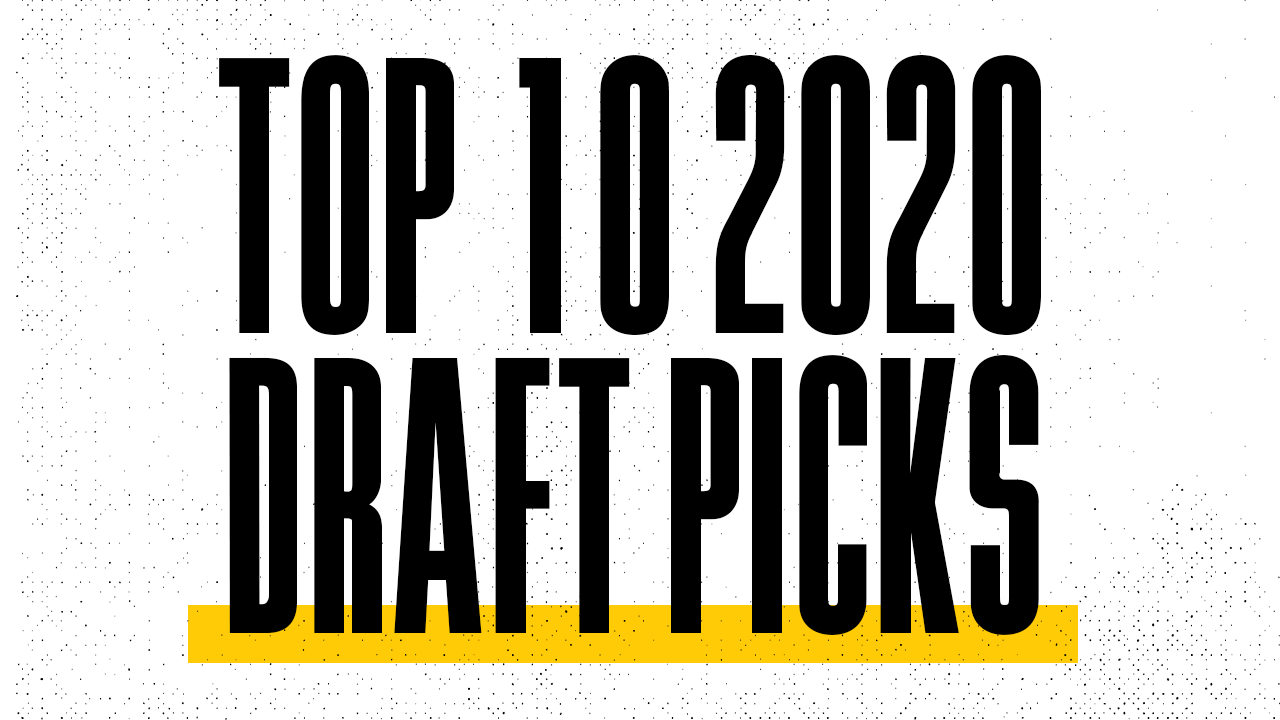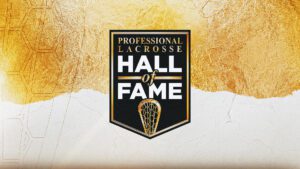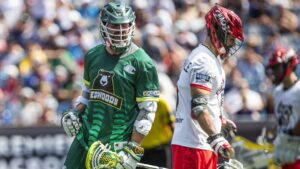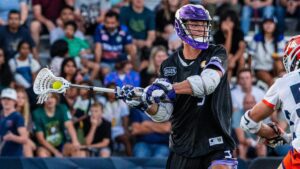We've Launched Draft Central
Your go to place for all things PLL Draft. Check it out now!
The 2020 draft class is deepest at attack. Midfield is a bigger position of need – Ryan Terefenko’s (Ohio State) stock could rise as high as the first round. Phil Goss (Brown) could go high after rookie goalies Jack Concannon and Timmy Troutner stepped into full-time roles in 2019. There are so many players worthy of a spot on this list – Bryan Costabile (Notre Dame), Ethan Walker (Denver), Gerard Arceri (Penn State), Mark Evanchick (Penn), Nick Mellen (Syracuse), Jackson Morrill (Yale), and Jared Conners (Virginia) could be impact pros. Jared Bernhardt is a top-five talent, but he will look to use his fifth year of eligibility in football after graduating from Maryland.
The top of this draft shifts depending on who wins the first pick. Faceoff athlete TD Ierlan (Yale) is the consensus top pick; if the Archers win, then Ierlan has to be the pick. But the Atlas and Chrome don’t need help at the X. Would the Atlas shop the pick? Would the Chrome draft Ierlan and shop Connor Farrell? If Joe Nardella runs the table for the rest of the postseason or if Greg Gurenlian retires, then the Redwoods and Chaos could enter a bidding war for the pick.
Maybe the offers for the top pick won’t blow the Chrome or Atlas away. There’s enough talent at several positions to justify using the pick.
The Chrome run attackmen-turned-midfielders out of the box; their transition defense was horrendous. Midfielders who can hustle to the hole are key to success in this league, and the Chrome have none. Dox Aitken (Virginia) can be the versatile, game-changing player that head coach Dom Starsia’s team needs.
The Atlas need two-way midfielders, too. Head coach John Paul’s squad dressed six defensemen per game in 2019. Most teams run with five. On an already-thin gameday roster, spending an extra spot on poles leads to tired legs between the arcs. Reuniting Aitken with his Virginia teammate Ryan Conrad could give the Atlas a boost from defense to offense and vice versa. Those two dominated in college lacrosse’s first season with an 80-second shot clock; a 52-second clock suits their games even better.
Most assume that the Archers would take Ierlan. What if they’re comfortable with their two-headed monster of Brendan Fowler and Stephen Kelly at the faceoff X? There would be an opportunity to add a big-time offensive playmaker here. Grant Ament and Mac O’Keefe play in a similar offensive scheme at Penn State. The transition would be seamless. Ament’s speedy dodge-to-feed style could complement Christian Cuccinello’s brutal physicality at X. O’Keefe would work well in an off-ball two-man game with Will Manny. Head Coach Chris Bates recruited Michael Sowers to Princeton. Attack is not a need on this team. At all. But this is one of those scenarios where you pick the best player and move the puzzle pieces around to make it work.
10. Tre Leclaire, A/M, Ohio State
Leclaire (6-2, 205) is built like a PLL midfielder. He can take topside on sweeps, especially against short-stick matchups – something he never sees in college, but should see as a rookie at the next level. His box lacrosse background makes him a perfect fit for the Chaos offense.
9. Michael Kraus, A, Virginia
8. Charlie Bertrand, A, Merrimack
7. Jeff Teat, A, Cornell
This class is loaded with left-handed attackmen. Kraus, Bertrand, and Teat can create their own shot or draw slides to feed others. Teat is the best off-ball player of the bunch; he has experience playing at the highest level internationally for Team Canada. Kraus’s stepdown shooting range extends farther than most attackmen who operate primarily from behind the cage. Bertrand – the two-time DII Player of the Year – will play on a DI stage next spring.
6. Mac O’Keefe, A, Penn State
Like Kraus, Bertrand, and Teat, he’s a lefty. What separates O’Keefe from the pack is his ability to play without the ball. That side of the field is crowded on most PLL rosters. Adding a left-handed initiator would be clunky; adding O’Keefe would alleviate any spacing issues.
Mac O’Keefe is the best shooter since Ryan Brown. As a junior at Penn State, O’Keefe scored 78 goals. He has shot 42.1% over his collegiate career; opposing goalies stop just 38.6% of his shots.
5. JT Giles-Harris, D, Duke
Giles-Harris is the top defensive prospect in the draft. Any team would want to draft a 1stTeam All-American and ACC Defensive Player of the Year – but the Atlas may find more value in Giles-Harris than anyone. The Redwoods and Whipsnakes have proven that chemistry is just as (if not more) important on the defensive end as it is on the offensive side. The experience that those units shared at Notre Dame and Maryland has translated to the pros. Pairing Giles-Harris with his college linemate, Cade Van Raaphorst, could help solve some of the Atlas’s defensive problems.
4. Michael Sowers, A, Princeton
3. Grant Ament, A, Penn State
Veteran defensemen will ask the PLL ops team to string the nets a little more loosely once Sowers and Ament take the field. These two can shake any defender, often turning their man around completely or tripping him up on the net. Attack isn’t a position of need for anyone. Most PLL teams need athletes in the midfield. But two teams will spend high draft picks on Sowers and Ament, then find a role for them later.
2. Dox Aitken, M, Virginia
Two-way midfielders are dominating the PLL. Look at the postseason rosters – those teams can transition from offense to defense and vice versa. Teams with one-dimensional midfielders struggle on the shorter field with the shorter clock. Aitken has the potential to be an elite two-way player like Jake Bernhardt, Brent Adams, Pat Harbeson, Sergio Perkovic, and Jake Froccaro.
1. TD Ierlan, FO, Yale
Three teams — Atlas, Archers and Chrome — will compete for the first overall pick. Atlas has the best faceoff athlete in the league, Trevor Baptiste (62.8%); Chrome has Connor Farrell (54.5%). The third team will be the loser of the Redwoods and Archers first-round matchup. Both Redwoods and Archers need a faceoff athlete. If they win the pick, then they’ll take Ierlan. If they don’t, then things get interesting.
What would it cost to trade for the top pick? Ierlan has proven himself against the highest level of competition; he won 15-of-30 faceoffs in the quarterfinals against Baptiste in 2018. With 12-minute quarters, a possession disadvantage can really hurt an offense’s rhythm (see: the Redwoods without Gurenlian). This pick will be worth a lot, especially if a postseason team falls short because of a lopsided matchup at the faceoff X.





Pingback: ถ้วยฟอยล์
Pingback: beretta firearms
Pingback: cvv websites
Pingback: sbo
Pingback: cvv dumps free
Pingback: lsd poster for sale
Pingback: funnywebcamgirls.com
Pingback: sbo
Pingback: nova88
Pingback: หนังเอวีซับไทย
Pingback: สล็อตวอเลท
Pingback: maxbet
Pingback: sbobet
Pingback: Henry Lever-Action X Model .45-70 Government Rifle
Pingback: เงินด่วน
Pingback: Buy weed Texas USA
Pingback: magic mushrooms mental health
Pingback: maxbet
Pingback: 토토세콤
Pingback: tu peux vérifier
Pingback: buy remingtonarms buy ssauerfirearms buy bergara arms guns buy chippa guns buy magnum research guns benelli firearms guns buy night hawk custom guns buy howafirearms guns buy stoeger guns
Pingback: dumps with pin shop
Pingback: magnum research guns
Pingback: browse around these guys
Pingback: penis enlargement surgery
Pingback: biilad rafidain
Pingback: non gamstop casinos
Pingback: อุปกรณ์ไอที